Strategic thinking development Worksheets for Ages 3-6
10 filtered results
-
From - To
Unlock your child's potential with our Strategic Thinking Development Worksheets for Ages 3-6! Designed to stimulate young minds, these engaging printables promote critical thinking, problem-solving, and decision-making skills. Through fun puzzles and age-appropriate activities, children enhance their cognitive abilities while enjoying learning. Our carefully crafted worksheets not only support academic growth but also foster creativity and confidence. Ideal for both classroom and at-home use, these resources offer the perfect blend of education and play. Invest in your child's future today with worksheets that make strategic thinking enjoyable and accessible. Start their journey towards smarter thinking now!
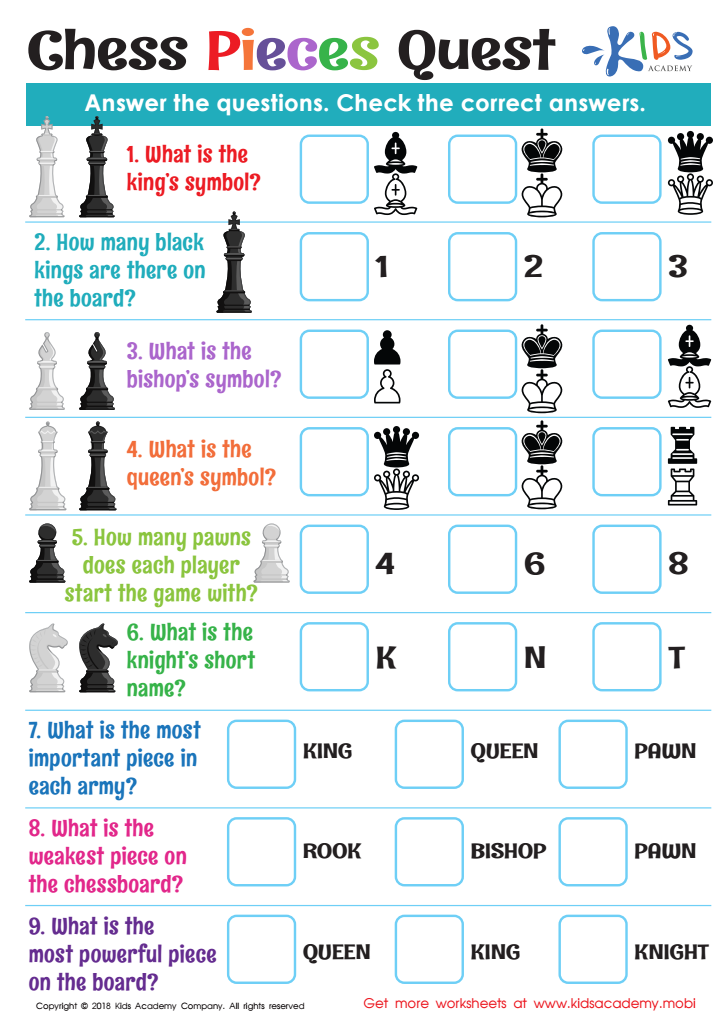

Chess Pieces Quest Worksheet


Notation of Moves Writing it Down Worksheet
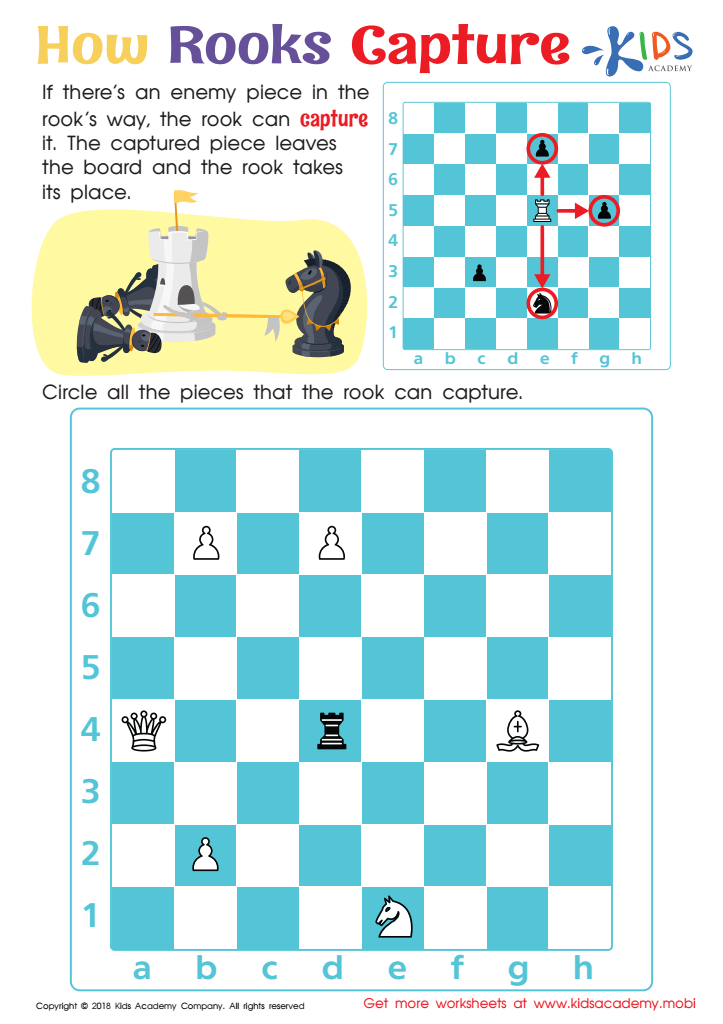

How Rooks Capture Worksheet
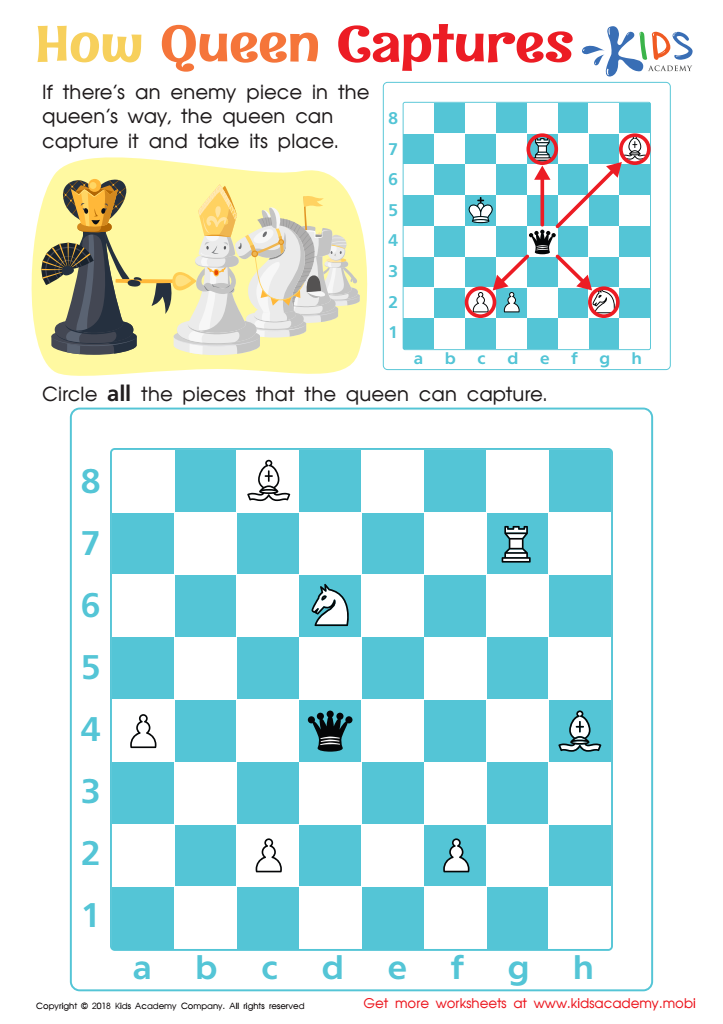

How Queen Captures Worksheet
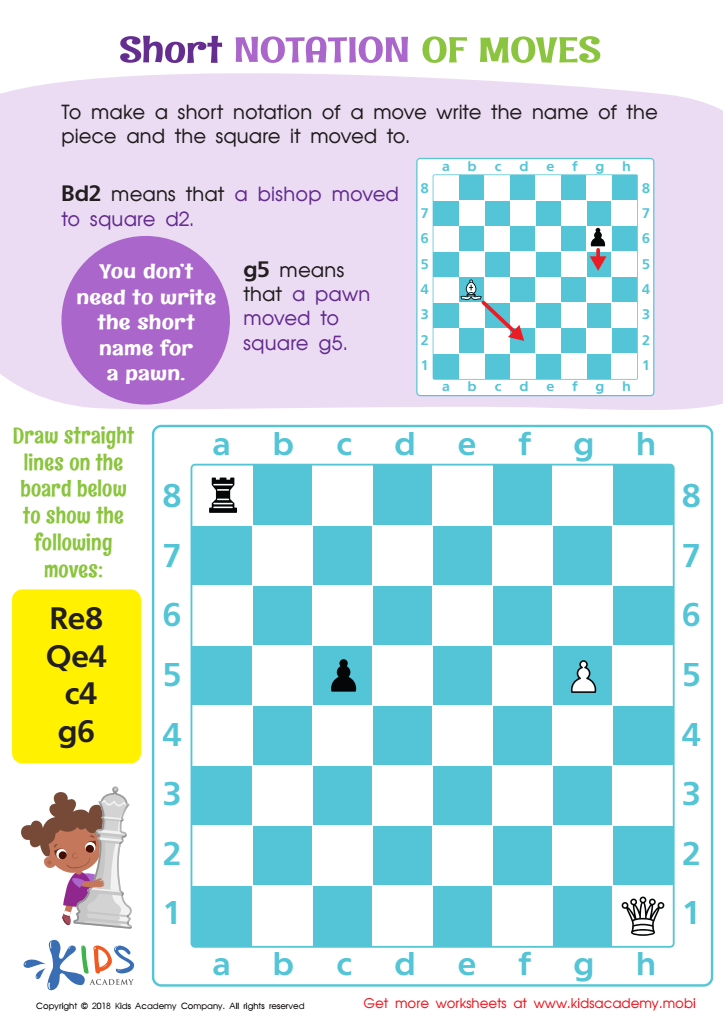

Short Notation of Moves Worksheet
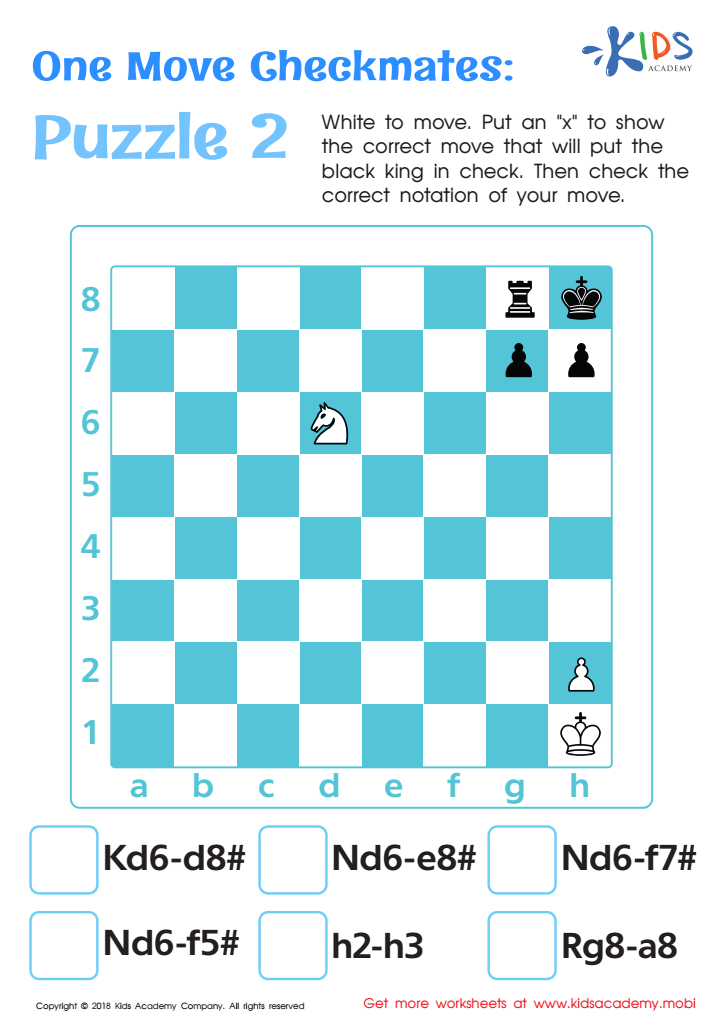

One Move Checkmates: Puzzle 2 Worksheet
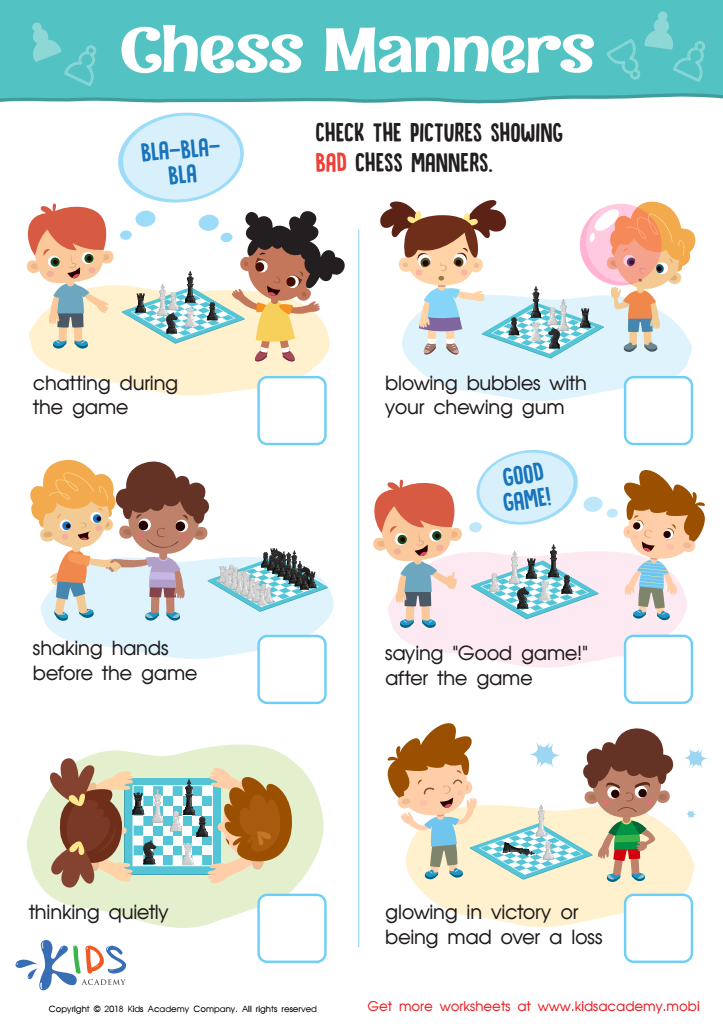

Chess Manners Worksheet
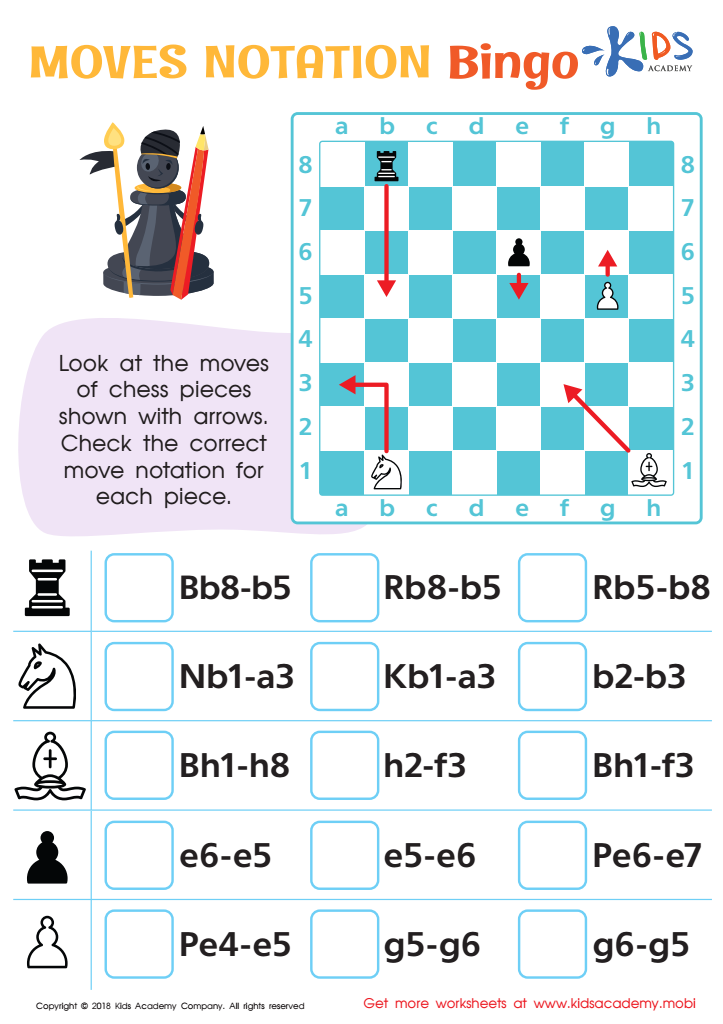

Moves Notation Bingo Worksheet
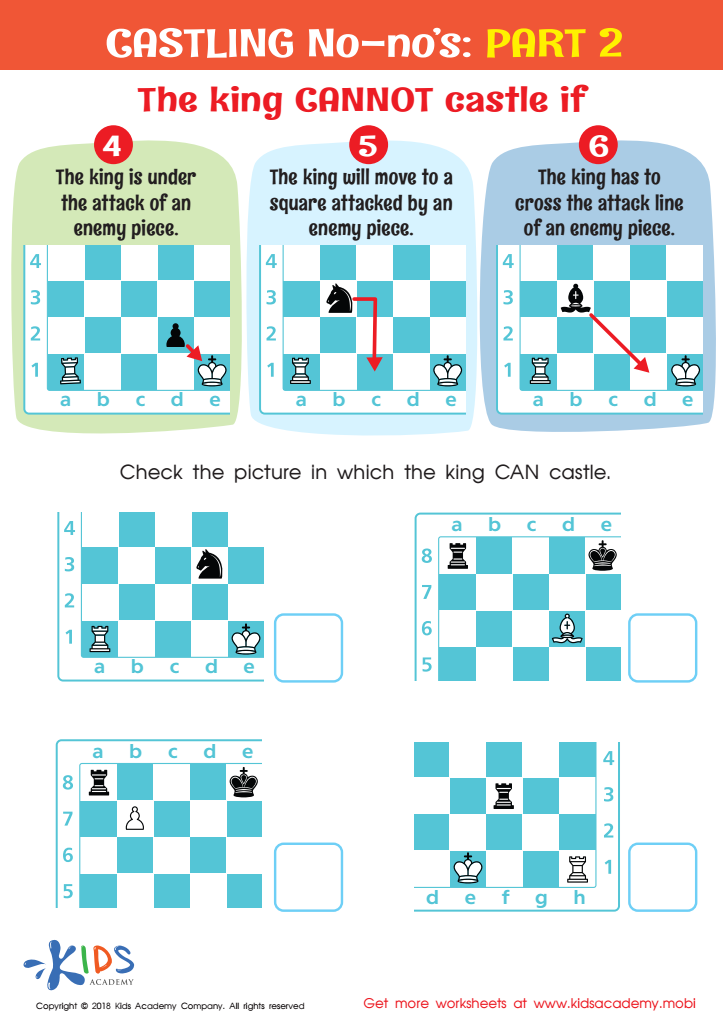

Castling No - no's: Part 2 Worksheet
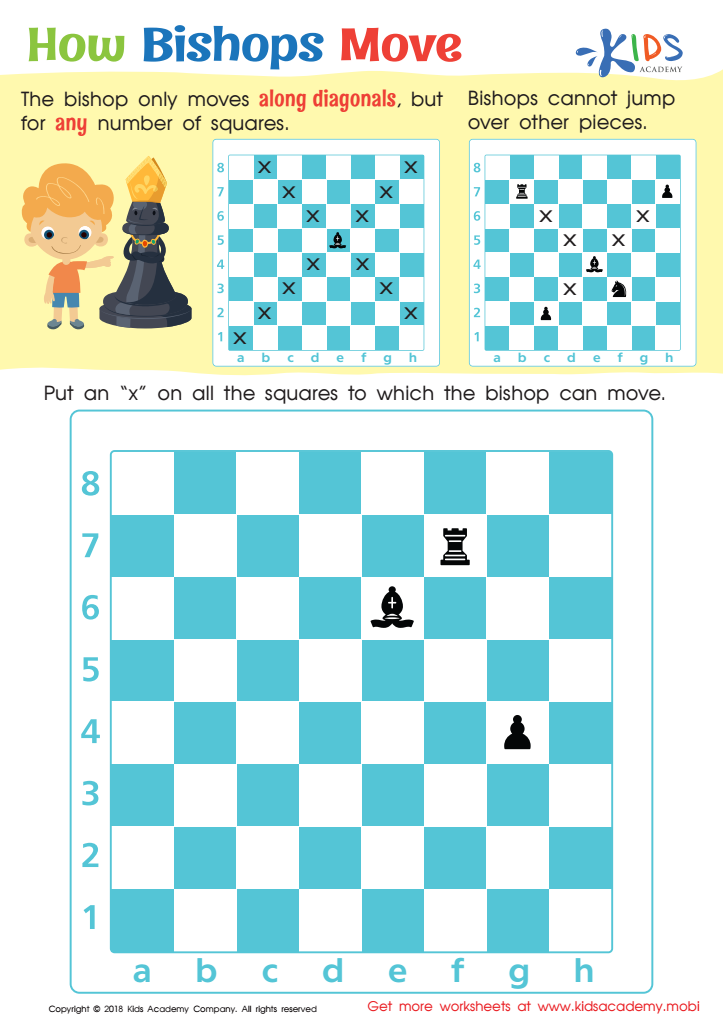

How Bishops Move Worksheet
Parents and teachers should prioritize the development of strategic thinking in children ages 3-6 because it lays a foundational cognitive framework crucial for their future learning and problem-solving abilities. During these formative years, children's brains are highly plastic and receptive to new information, making it the perfect time to instill essential reasoning skills. Strategic thinking enhances a child's ability to plan, anticipate outcomes, and make decisions, which is fundamental for navigating academic and social challenges.
Introducing strategic thinking can be as simple as engaging children in age-appropriate games that require them to follow rules, recognize patterns, and think several steps ahead, such as puzzles or basic board games. These activities cultivate patience, persistence, and the ability to think critically and abstractly. Furthermore, strategic thinking is not only beneficial academically but also fosters emotional intelligence by teaching children how to manage setbacks and consider others’ perspectives during problem-solving.
By embedding strategic thinking skills early on, parents and teachers equip children with a toolkit of mental strategies that support lifelong learning and adaptation. This early development translates into improved academic performance, better interpersonal skills, and a more resilient mindset, ultimately preparing children for the complexities of real-world situations.

 Assign to My Students
Assign to My Students






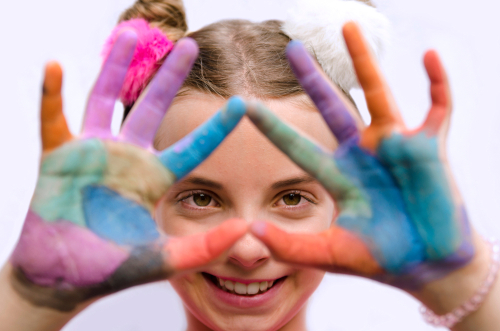




.jpg)










